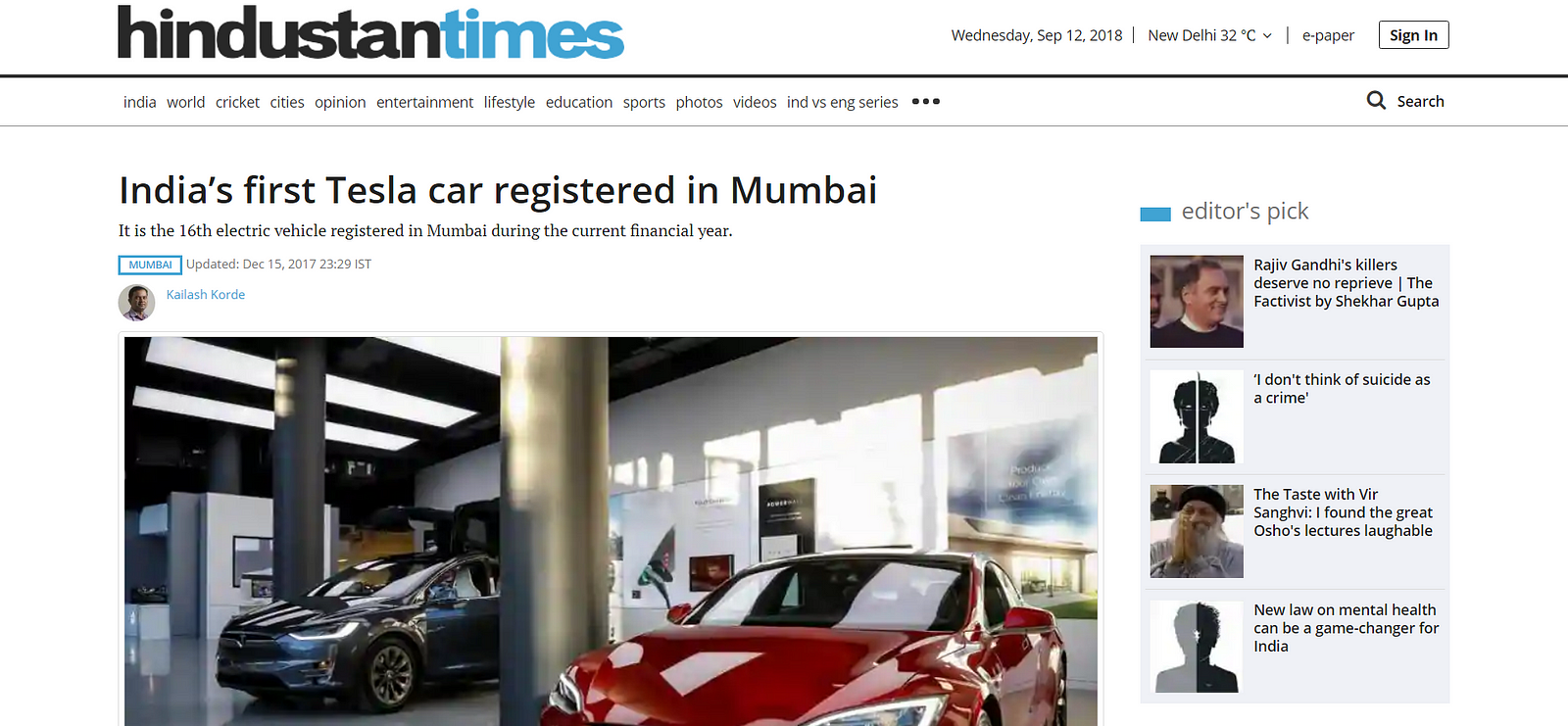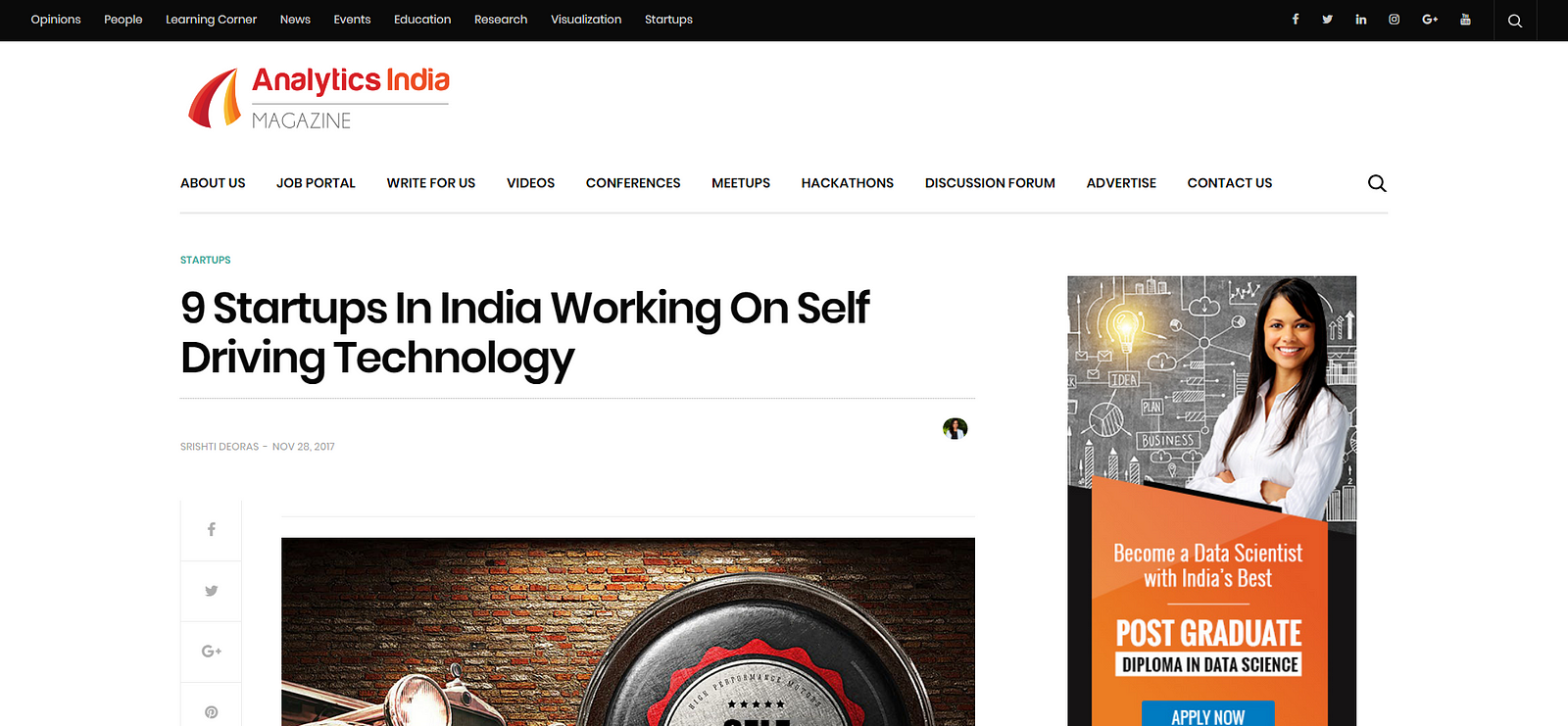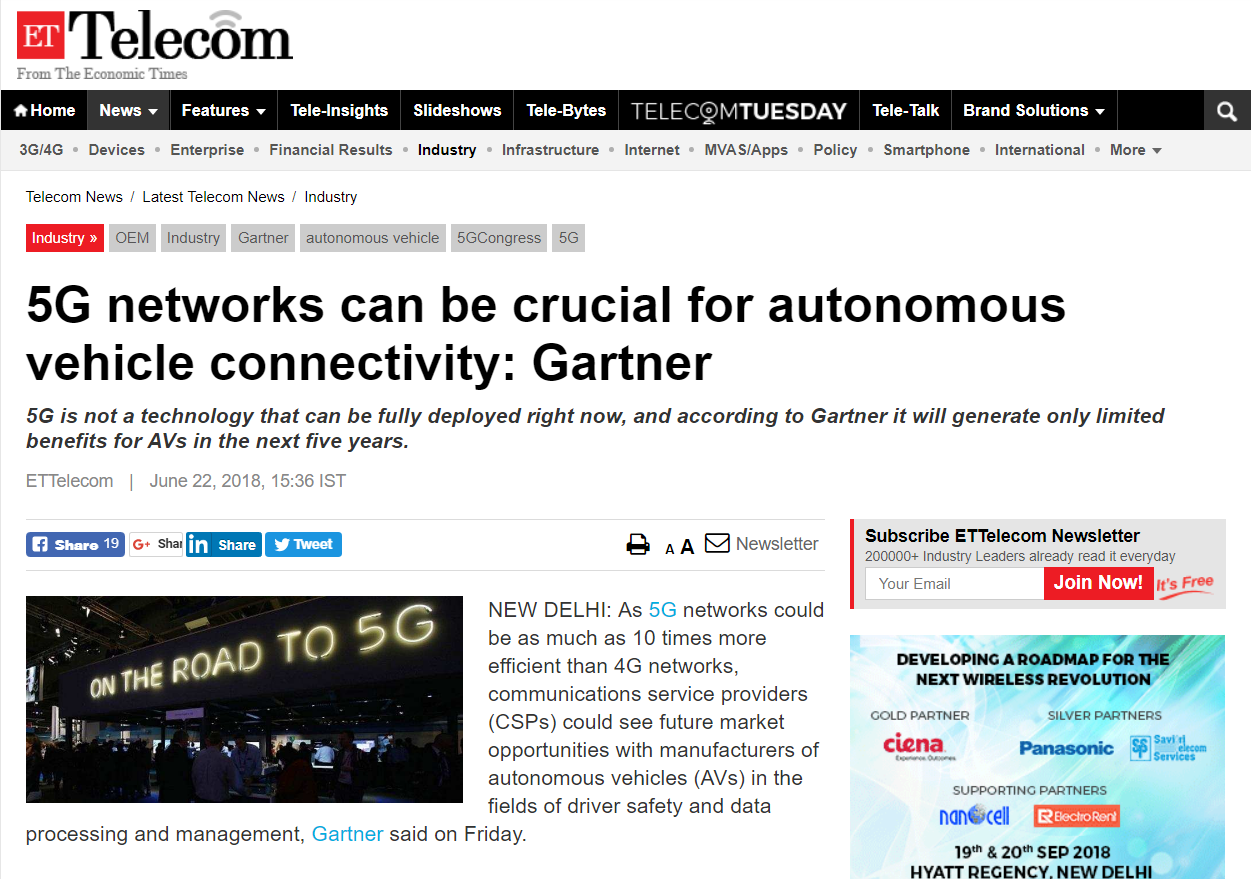Indian Roads To Be Litmus Test For Self Driving Cars
Alphabet, Waymo’s parent company announced towards the end of July 2018 that it was experimenting with prices and finalising its business model before unleashing its autonomous fleet ‘Robotaxi’ in Phoenix, Arizona later this year. Waymo is contemplating pricing rides at similar costs to that of a ride from Uber or Lyft but cheaper than a local taxi.


Yes, self driving cars are here and have found many takers in the US. In fact, India’s first Tesla X, a high-end electric car with self-driving capability, was registered at the Tardeo Regional Transport Office (RTO) in December 2017. While the National Democratic Alliance (NDA) government wants only electric vehicles to ply on India’s roads by 2030 as part of its commitment to reduce greenhouse gas emissions under the global agreement on climate change, and to reduce spending on oil imports, the Union transport minister Nitin Gadkari expressed his reservations citing unemployment scenario in the country. Most importantly, there are also problems like the condition of Indian roads, a general irreverence of traffic rules, jaywalking and stray cattle to consider before self driving cars can be introduced in India.
Innovation from the Indian startup ecosystem
“I don’t think you will be able to bring the technology existing elsewhere and just slap it into a car for an Indian road, for self-driving to work in India, you will have to build a unique technology for it.” says Sanjeev Sharma, founder of Swaayatt (sanskrit for autonomous) Robots in Bhopal who has been working on technology for autonomous or self-driving vehicles for the past nine years.
Sharma along with a handful of other tech and robotic startups in India, have perhaps taken up the most ambitious of the self-driving challenges: building the technology for an autonomous car to navigate the unpredictable and unruly Indian road. Flux Auto is developing modular self driving technology for new and existing commercial vehicles, this Bangalore based autonomous truck driving startup converts/ transforms normal truck into a driverless truck. It aims to facilitate features like cruise control, lane keeping, collision avoidance, keeping a check on accidents, higher efficiency, amongst others in a much cost effective manner. ATImotors is designing autonomous electric cargo vehicles, with a major focus on customers outside India. Sharma’s aforementioned Swaayatt Robots is trying to make self driving technology work by using off-the-shelf cameras, making expensive LIDAR and RADAR technology (sensors) redundant and design autonomous cars that will be able to maneuver extremely difficult traffic situations typical of Indian roads. OmniPresent Robot has plans to deploy monocular camera for detecting traffic lights and decoding road signs. They also aim to use machine learning and deep learning to enhance vehicle performance and are striving hard to achieve precision localization.
Trial and error
The companies are aware however, that problems persist. Three months ago, a self-driving Uber car killed a pedestrian in Arizona. One of Waymo’s self-driving vehicle was also involved in a collision in Arizona. It was also reported that five of these crashes are already under investigation by the National Transportation Safety Board in the US.
At the same time, Waymo’s Early Rider program in the Phoenix area is the furthest along among the company’s 25 test cities. The Google offshoot has logged more than 8 million miles in fully autonomous mode and is now starting to test cars in Phoenix with no backup safety driver behind the wheel. the company with the second-largest number of miles driven is Uber, at 3 million miles.
Waymo has also “driven” 5 billion miles in simulation. Everyday, over 25,000 virtual versions of the company’s self-driving cars rack up around 8 million miles of simulated driving. The simulator allows self-driving cars to practice situations they may not regularly encounter in the real world. Waymo’s engineers can then run their virtual vehicles through these so-called “edge case” scenarios over and over, accumulating important training data that then gets fed back into the machine learning software.


This testing along with the current early rider program is what has given Alphabet the confidence to announce the start of the Robotaxi later this year. There are already a handful of startups working on self driving technology for India who must also think of virtual simulators to perfect their technology for Indian roads.
M2M communication for autonomous vehicles in India


Further, high speed internet connectivity that is omnipresent would be critical before work on autonomous vehicles in India has to take off in full measure. Self driving car systems and sensors will generate data in huge amounts which will have to be extracted and processed for insights by the automotive original equipment manufacturers (OEMs). While 4G connectivity has taken off well in most parts of the country, remote areas and smaller cities still remain disconnected. 5G networks could be as much as 10 times more efficient than 4G networks and telecom service providers could see future market opportunities with automotive OEMs in the fields of driver safety and data processing and management.
The Indian government is more focused on bringing electric vehicles on road, rather than autonomous ones. Moreover, none of the State governments has clear laws for such vehicles. However, the technology for self driving cars is already here. It may only be a matter of time before India has its own Waymo too.
The adoption of self driving cars in India might be slow, but it is expected to take place, says Ritukar Vijay, head of autonomous tech and business strategy at another startup called Hi-Tech Robotic. Although he does further opine that adoption of the technology could be gradual starting with advanced driver assistance systems like automatic brakes, assisted parking, etc., to eventually fully-autonomous cars.
